The history of the high jump is comparatively short. IN Olympic Games antiquity there is no mention of competitions in this species. Only at the beginning of the XIX century. in German turnfereins, a gymnastic jump from a direct run appeared. At the same time, none of the jumps has undergone such changes in technique as in high jumps. Five varieties in this type of jump - "stepping", "wave", "roll", "flip", "fosbury flop" - have passed a relatively short historical path.
Write a fundamental relationship of dynamics for a subject that jumps after establishing a balance of power. Use the trapezoid method to digitally integrate the signal and get the speed. Perhaps you have a problem, the speed "deviates" and increases unnaturally over time.
This phenomenon is related to signal quality and electronics drift. We must find the same signal at the beginning at rest and at the end at rest, or this is usually not the case. This drift is then subtracted from the signal and then the signal is corrected. Then show how the speed changes over time.
The first officially registered result in high jumps in 1864 was 167 cm. Moreover, the takeoff and landing were made on grass. Athletes jumped from a straight run, crossed the bar, pressing their legs, or jumped at an acute angle, performing leg movements with “scissors”. Subsequently, this style was called "stepping over". In 1887, the American W. Page set the first world record - 193 cm.
Integrate the velocity to get variations in the center of gravity ordinate. Do you find the jump height measured from the video? We are trying to find the jump height with other methods that force you to fall back on the definitions that are visible in the class. Neglecting air friction, we know that mechanical energy is conserved during a jump. Potential and kinetic energy are converted into one another as the movement progresses.
Write an expression for the mechanical energy at the moment of takeoff. We will do this in three ways. In the case of free fall, the change in velocity between the start and end of the jump is proportional to the duration of the jump. If we assume that the jumper repeats several identical jumps, and the landing speed is opposite to the takeoff speed, then the takeoff speed is equal.
A significant step forward in the search better style made it possible to create an East American way of jumping (“wave”), by which the American M. Sunney in 1896 set a world record that lasted 16 years - 197 cm. a new style jump - "horain", named after the American jumper D. Horain, who first showed this style. Later, the style was called "roll".
During the positron phase, the momentum associated with the received force will change the momentum. The initial impulse is zero, since the jumper does not move. Often the jump height calculated from the duration of the flight phase is slightly greater than that found using momentum because the bridge is slightly bent on landing rather than on takeoff.
The change in the kinetic energy of the system is equal to the sum of the forces applied to the system. Vertical jumps are among the most commonly used field trials. Indeed, the results in the vertical jump are directly or indirectly involved in final game in many disciplines, especially in team sports. They are easy to install, most athletes can practice them, and they require no materials. In addition to the maximum vertical height achieved during the jump, they allow the power generated by the lower limbs to be estimated using mathematical formulas.
In 1936, D. Olbritton demonstrates new way crossing the bar - lying with your stomach to it. Interestingly, back in the 20s. of the same century, B. Vzorov used this method of jumping, but did not receive worthy attention. This style was called "cross over". In 1941, the American L. Steers set a world record - 211 cm - in a "flip" way. In 1957, the Soviet athlete Yu. Stepanov set a new world record - 216 cm, interrupting more than seventy years of hegemony of American athletes. And since 1961, the record passed to the wonderful Soviet jumper V. Brumel, who jumped in the "flip" style, and amounted to 228 cm.
However, for a reliable assessment both in terms of data accuracy and the level of repetition over time, it is necessary to use quality material. Figure Screenshots of the My Transition application. To estimate the height of a vertical jump, there are many equipment that work on different principles. The reference method is to measure the flight time or takeoff speed using a power platform. However, the high cost and almost limited use in the laboratory has pushed trainers and physical trainers towards more economical and, above all, more practical solutions using different methods, but most of these tools remain either inaccurate or expensive.
In 1968, at the Olympic Games in Mexico City, R. Fosbury (USA) demonstrated a new way of crossing the bar - lying on his back, while winning a gold medal. Nowadays, all jumpers and jumpers use this jumping style, as it has been scientifically proven to be effective over all other jumping styles.
To date, the world record in high jump for men belongs to X. Sotomayor (Cuba) - 245 cm, for women - S. Kostadinova (Bulgaria) - 209 cm, jumping in the Fosbury-flop style.
In addition, the most modern devices require data processing with an adapted software, which increases the data processing time. And when the number of hops to be transferred is high, valuable time can be lost.
With the advent of smartphones, wear-resistant technologies are constantly evolving. But what about its validity and reproducibility? To answer this question, a Spanish researcher and two British researchers tested the validity and reproducibility of the application against a power platform that included 20 male students.
The high jump from a running start is a coordination-complex sport that places high demands on the physical capabilities of athletes. Conventionally, this jump can be divided into four main structural phases: 1) run-up, 2) repulsion, 3) crossing the bar and 4) landing.
List of used literature:
- Zhilkin A.I. etc. Athletics: Proc. allowance for students. higher ped. textbook institutions / A.I. Zhilkin, V.S. Kuzmin, E.V. Sidorchuk. - M.: Publishing Center "Academy", 2003. - 464 p.
High jump is one of the most ancient and natural types of athletics. Athletics in general is very organic and harmonious: running, jumping, throwing heavy objects were known to the first people on the planet.
In both cases, the calculation method used was based on the flight time during the jump thanks to this equation. The force platform measures flight time based on the forces applied to it. As the legs leave the plate, the force drops to 0, and as the object lands, the applied forces increase. The user then selects the frame where the feet just left the ground, and the one where one of the two feet is touching the ground. calculates elapsed time. In the case of the application, two people with no training in image processing would proceed to select frames for the start and end of the transition, and then statistical analyzes were performed on the collected data for data comparison. two methods for estimating jump height.
In order to overcome the height, it is necessary to raise the center of gravity of the body above the bar. Or as close to the bar as possible. The center of gravity of the body of any person is located just below the navel, in the region of the second sacral vertebra. Or just above this vertebra. Women are a little lower. Depending on the structure of this body. ( Center of gravity- this, as you know, is the point relative to which the total moment of the forces of gravity acting on the system is equal to zero). Some have a much lower center of gravity, but they usually do not jump in height. And they hardly jump at all.
Therefore, the researchers determined the intra-class correlation between the two methods and the reproducibility of the method between 5 hops and between different users. It is very interesting to see that the application, which costs almost 6 euros, is almost as good as the platform for measuring the vertical jump.
Indeed, the higher the frequency, the more accurate the measurement will be. This indicates a decrease in the measurement error. As a reminder, you may link to articles that limit your citation to no more than 200 words and include a nominative link to it. All other uses, in particular full copying of the discussion forum, the Internet site or any other content, are strictly prohibited.
So, the whole one and a half century history of high jumps is essentially a search for the most effective options for transferring the center of gravity of the body above the level of the bar. Leaving aside the entertainment of the German burghers early XIX centuries in the form of jumping over a stick with two feet forward, the whole evolution fits into five terms:
scissors - wave - roll - flip - flop.
Proper strength training includes light athletic exercises, the effectiveness of which is also reflected in other sports disciplines. Some of them are based on weeding, throwing and lifting weights. Strength training plays very important role in the athletic performance of each athlete. For some of them, the increase in maximum strength is expressed, for example, by getting better results when throwing a jig or jumping. However, the equation is: more strong force muscles, higher athletic performance is not linear, indeed, can only be accurate with the help of detailed and targeted training programs.
Scissors jumped at the first Olympic Games in 1896.
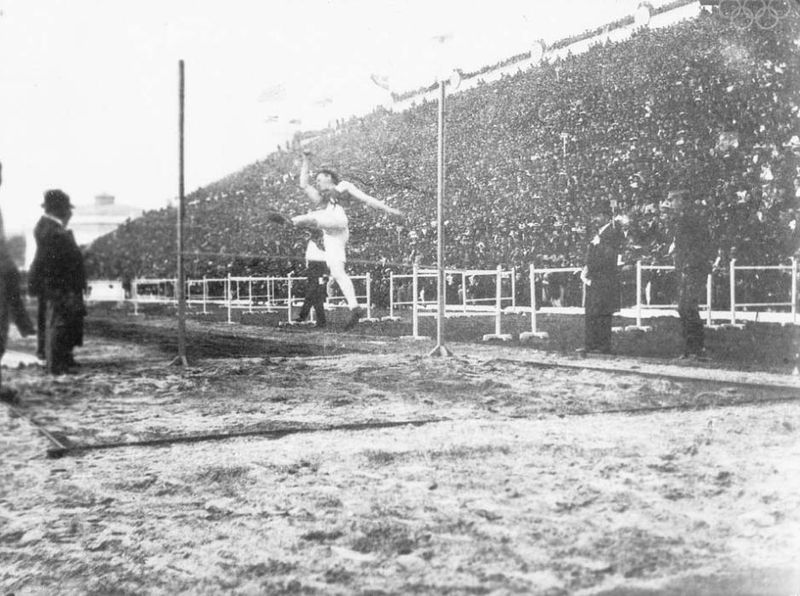
And an olympic champion 1908. also jumped with scissors:
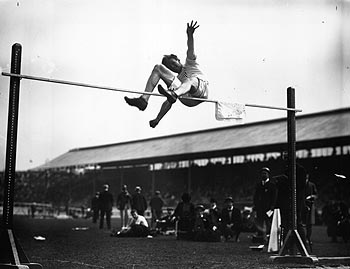
Olympic champion 1908 Gary Porter(USA) and his 1 m jump 90.5 cm
Possession of a solid core of muscles is a prerequisite for improving athletic performance. Only those who have developed a solid core muscle can train in a certain way and avoid such irritating muscle tensions or overloads in the tendons and joints.
Proper strength training includes activities aimed at increasing strength. These are mainly light athletic exercises, the effectiveness of which is also reflected in other sports disciplines. Strength training can be combined with other conditional and coordinated opportunities and is a central part of many athletic training sessions.
However, primitive scissors gradually evolved, and at the beginning of the century a "wave" appeared.
True, women continued to jump with scissors, for example, the 1928 Olympic champion (159 cm) Canadian Ethel Catherwood:
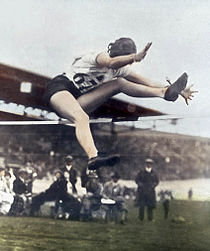
The author of the "wave" is George Horine, who was the first in the world to overcome 2 meters. At the 1912 Games he won a bronze medal. Actually, this style is named after him. Horine crossed the bar sideways, running towards it at right angles.
In the exercises for the squad, pay attention to. Active foot support: lift your toes when landing, and when unloading, bring it to the floor. This reduces the duration of contact. Stretch your ankle: Stretch your ankle as much as possible to release the largest number strength from the musculature of the calf.
Extend your body: Stretch your body as far as you can to hip height, allowing you to increase the squad's pulse. Waving arms: arms help to give momentum. Keep your feet in the axle: During unloading and especially when landing, keep your feet in the axle. Shoe outsole: A sole that is too soft does not stabilize the fit, while one that is too heavy cannot cushion the impact on the ground. A treadmill or sports shoes are recommended.
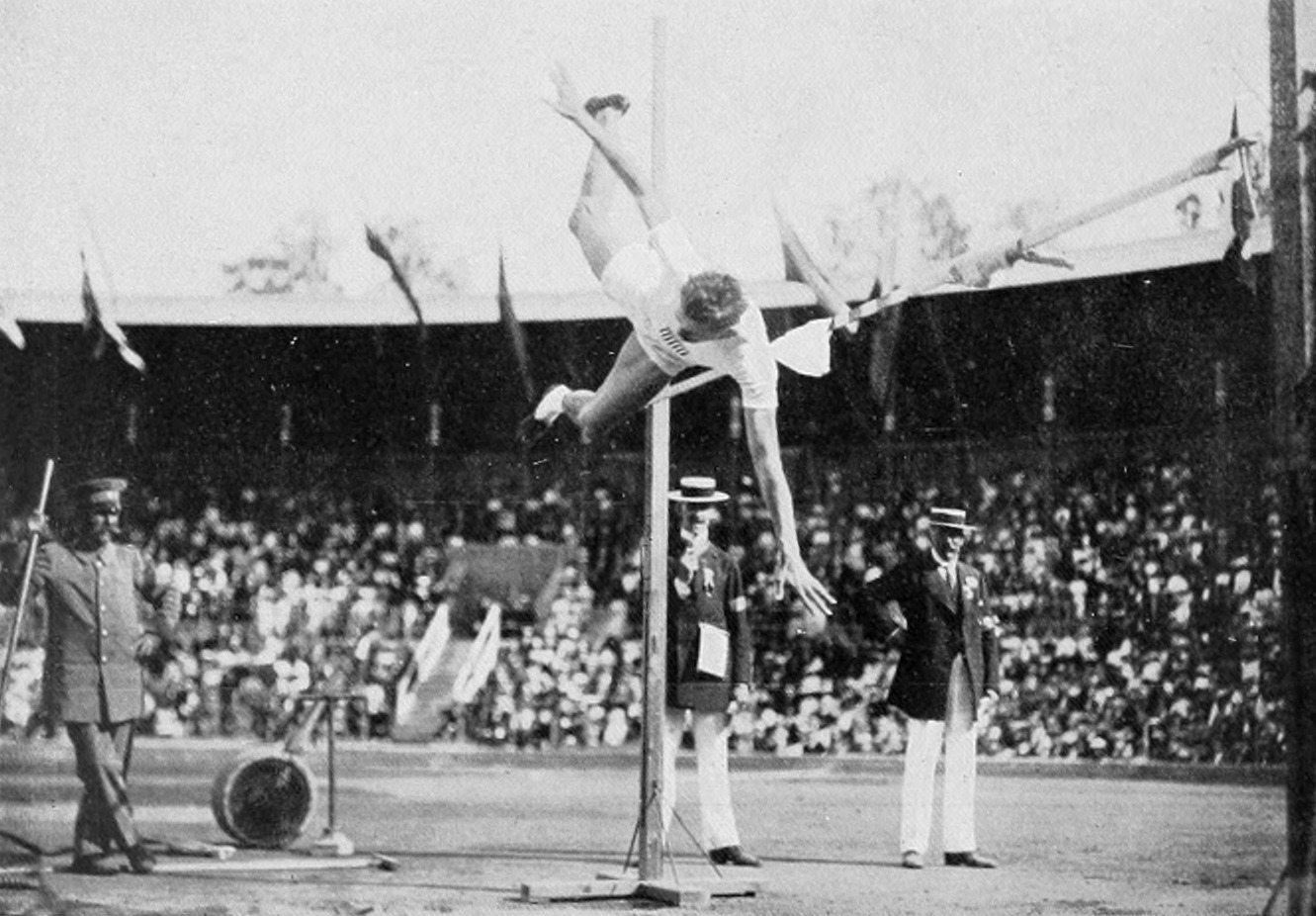
George Horine, bronze medalist at the 1912 Games
Most bright representative, more precisely, the representative of the "horaina" - an outstanding Romanian jumper Yolanda Balash, Olympic champion in 1960 and 1964:

Jump Strength Exercise Examples
Go to lace: calf muscle fiber speed can be trained through rope jumps. Take half a circle around the longitudinal axis. Crouch Jump: Jump from a crouch over a bench. Landing crouches again. Coordination games: combination of jumps with one or two legs.
Reactivity for better performance
Momentum: Every three steps gives a jump to the top. Jump along the edges of the square: connect, jump first, then back, then right and left. Plyometric training is especially suitable for increasing explosive and fast strength. This method first delivers an eccentric load to the muscle, followed immediately by rapid muscle contraction. Ground contact time should be kept to a minimum.
She jumped with this style, when everyone in the world had long since switched to the "flip-over", and her world record (191 cm) lasted almost 10 years.
The development of the technique of high jumps was hampered by the rule, according to which the bar had to be crossed first with the feet, and only then to transfer the rest of the body. This rule was abolished in 1925, and in the 1930s. the "roll" style appeared. The athlete runs up to the bar at an angle from the side of the jogging leg, pushes off, crosses the bar and lands on the jogging leg.
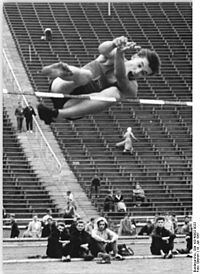
In the late 40s and early 50s, most Soviet high jumpers jumped this style and could not overcome 2 meters in any way. Meanwhile, the strongest jumpers in the world have long and successfully mastered the flip style. Back in 1941, jumping "crossover" (or "straddle"), the American Steers took 211 cm, setting a world record. The difference between "flip" and "roll" is as follows. The run is the same as during the “roll”, but the athlete pushes off with the foot closest to the bar and lands on the fly leg. Going through the bar successively with a swing and then a push leg, with a bent body position and a deep “dive” head down behind the bar, lowers the center of gravity (center of mass of the body) below the level of the bar. Compared with the "scissors" this gives an advantage of almost half a meter.
Development Soviet school high jump is inextricably linked with the name of Professor Vladimir Dyachkov. Himself in the past a wonderful athlete, repeated champion of the USSR, Dyachkov developed a methodology for teaching "flip" and began to "introduce it to the masses." If the bronze medalist of Melbourne-1956 Igor Kashkarov was still jumping in a roll, then already in 1957 Yuri Stepanov set a world record - 216 cm. .
However, the record was still ratified, and then the era of Soviet high-altitude athletes began. It began with the Games in Rome, when Robert Shavlakadze, who retrained from a roll to a flip, won the Olympic champion title with a score of 216 cm, ahead of 18-year-old Valery Brumel in attempts.
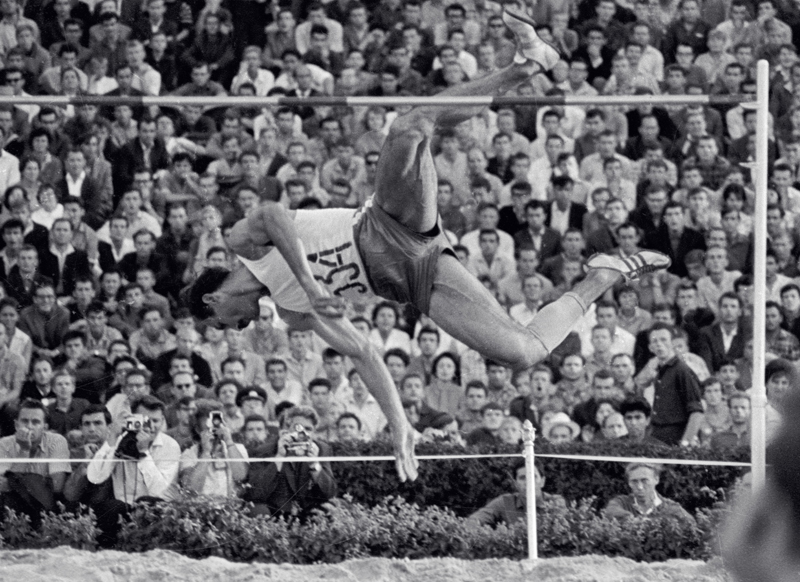
The world record holder American John Thomas remained third (214 cm), again ahead of the third Soviet jumper Viktor Bolshov in attempts.
And then began a series of victories and records Valeria Brumelya.
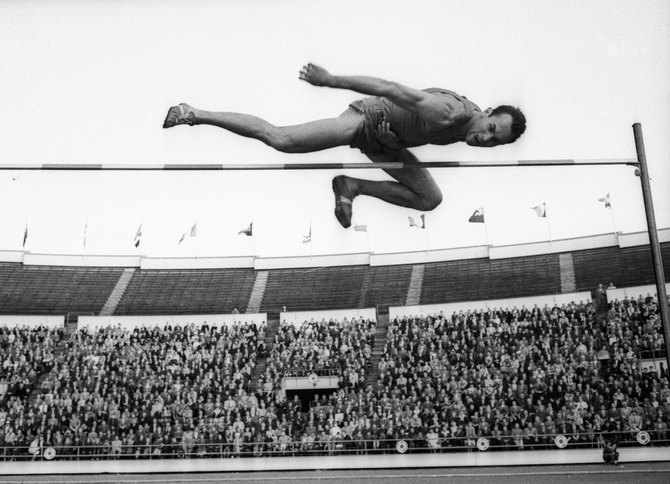
Pay attention to the number of viewers. Everyone went "to Brumel."
Everything seemed calm in the hopping world. The basic characteristics of a high jumper, training methods have been worked out ...
Until 1968, the high jump had evolved: straight-body scissors, wave, roll, and flip-over with a slope facing the bar. In 1968 there was revolution: Dick Fosbury, running up to the bar at a right angle, crossed it with his back and landed on his back.

in Mexico City Richard Fosbury took 224 cm and became the Olympic champion. The flop epidemic has swept the world. And only our sports leaders were skeptical about the new style. The same Dyachkov called the flop almost a circus and said that it suits only its author. However, the world record of another American, Patrick Matzdorf, proved that the flop has no less right to exist than the flip. For some time, supporters of both styles competed on an equal footing. So, in 1972, the gold in Munich was won by the “flip-flop” Juri Tarmak. However, our jumpers successfully mastered the flop.
The last "king of the flip" was the fantastically talented and quickly burned out Vladimir Yaschenko- 235 cm.
Today the flop won a total victory. It allows jumpers of completely different physical parameters to achieve outstanding results. For example,
Andrey Silnov, Beijing Olympic champion, typical high-altitude climber,
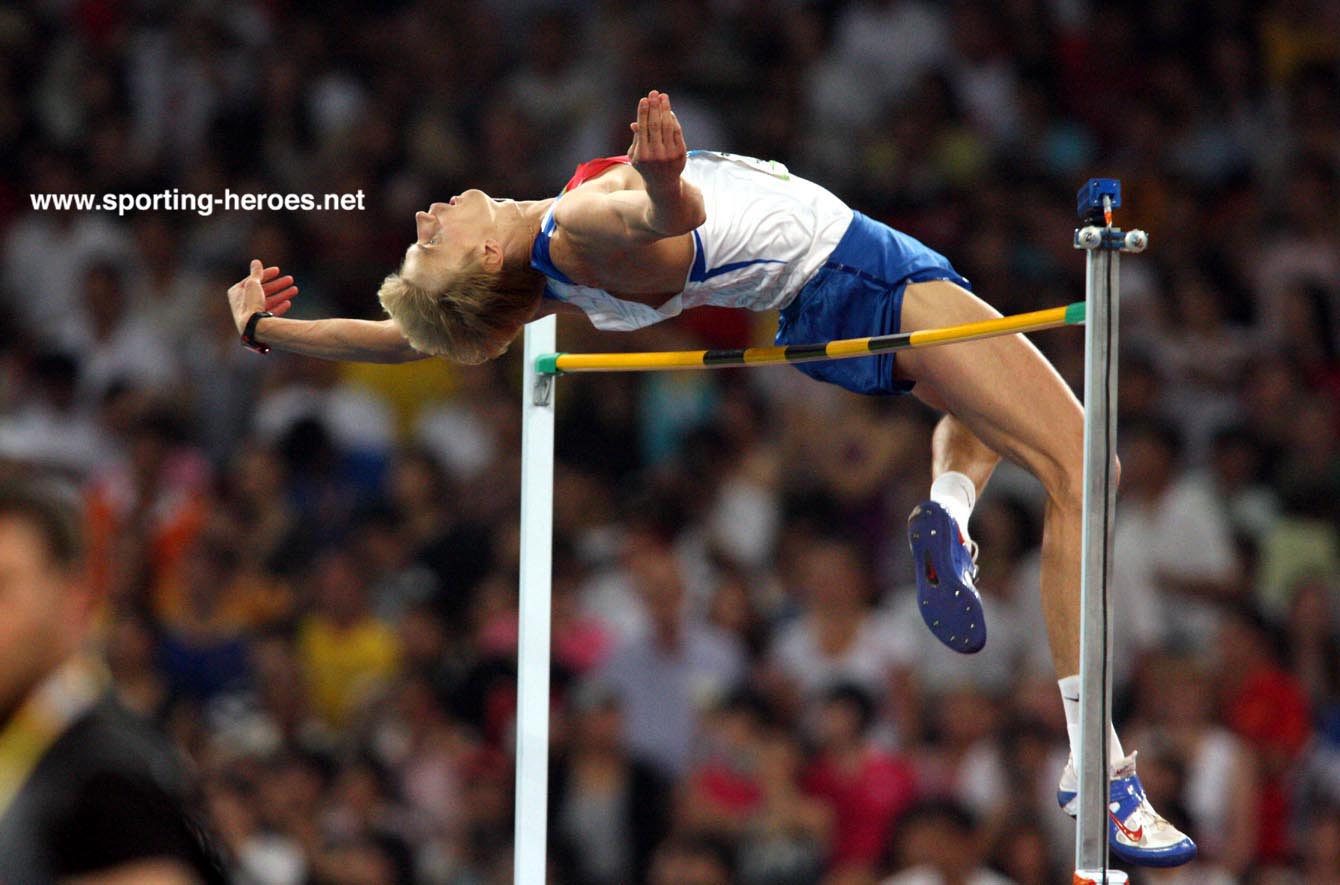
Ivan Ukhov, London Olympic champion, more like a shot putter
And again everything is calm in the hopping sky: flop and only flop.
This season, not just a few, like Igor Paklin or Javier Sotomayor, have reached the 240 cm line, but a whole group of brilliant jumpers: Ivan Ukhov, Derek Dryuin, Murtaz Barshim, Bogdan Bondarenko, and several more are on the way.
Diamond League Stage. Doha 2014
However, the stage in New York made a splash. For the first time in the history of athletics, an athlete who overcame 242 cm took second place! It turned out to be Murtaz Barshim, who lost to Bogdan Bondarenko on attempts.
Murtaz Barshim and Bogdan Bondarenko
Today the flop looks like a completely organic high jump style. It seems that it is simply impossible to jump otherwise.
And yet it's interesting how will they jump after the flop?









